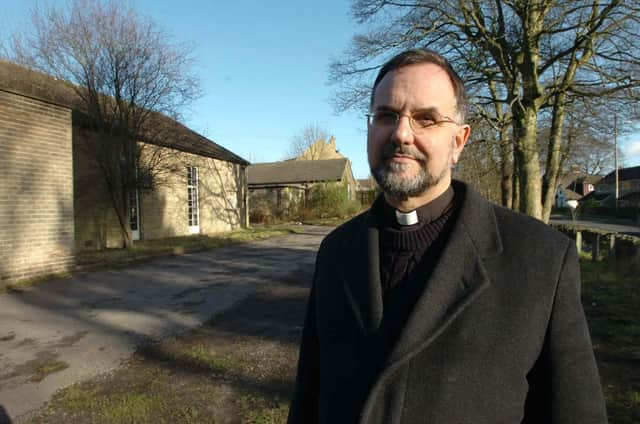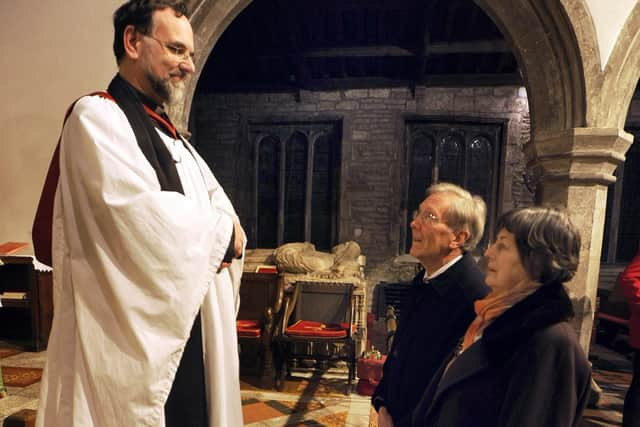John Curr (1756-1823): Sheffield’s forgotten railway pioneer and why we should remember him


Perhaps these lines set the pattern for two centuries of obscurity for an engineer, who probably laid the world’s first all-ferrous railway track here in Sheffield.
I became interested in Curr through my researches into family history, which I’ve been able to pursue more freely since my retirement as Rector of Norton in 2019.
Advertisement
Hide AdAdvertisement
Hide AdJohn’s brother, George (1749-1826), was my direct ancestor, and the two settled in Sheffield in 1774, or shortly after.


Their father, John, who died in 1777, was a ‘coal viewer’, i.e. colliery manager, in Stella (on the Tyne), then in Kyo, north of Durham.
Towards the end of his life, he seems to have mentored John Buddle I (1743-1806) in that profession, the two families living as neighbours near to Bushblades pit.
Buddle was probably1 the consultant who compiled a report on the Sheffield collieries, dated 1773, which recommended the construction (or possibly the recommissioning) of a wooden ‘Waggon Way’ from the main pit to a coal-yard near the present Canal Basin.
Advertisement
Hide AdAdvertisement
Hide AdThis was implemented in 1774, and may have been damaged in subsequent rioting, though the legend of the young John Curr being hounded by an angry mob is now thought unlikely.
In 1779, Curr was appointed as superintendent of all the Norfolk Estate collieries in the Sheffield area; aged only 23, his precocious talent had been recognised, notably by Vincent Eyre, the Duke’s Agent.
Curr certainly worked professionally on the local pits for some years before, and in his very successful 1797 book, the Coal Viewer and Engine Builder’s Practical Companion2, he claimed that his integrated system -flanged (L-section) iron rails, large, wheeled corves, improved lifting apparatus, and flat traction ropes- was already in use 21 years previously.
That was a very precise claim, and although we know that it took most of the next two decades to complete the system, with real progress made in the late 80s, I think we must accept that these features began to be installed from about 1776.
Advertisement
Hide AdAdvertisement
Hide AdThat would suggest that at least a short length of track somewhere on –or within- Park Hill was probably the world’s first real ‘iron road’, and certainly many of the early iron rails were produced in John Curr’s foundry.
Recent researches, headed by Calvin Payne of Sheffield University, have included excavations along a known track-bed from Corker Bottoms Lane, then alongside Lumley Street and Blast Lane, but other theories have held that the line Curr built in the 1770s and -80s either followed or paralleled the steeper route down to the coal-yard, along City Road and Duke St.
Other studies, mostly unpublished, have been made of the Curr family, which included Edward, an Australian pioneer and statesman, John, who also ended up in Australia, after a rather chequered career as a steam navigation engineer and tobacco merchant, and Joseph, who seems to have always been intended for the Church by this very devout Roman Catholic family.
Joseph served in many northern parishes, was and was, for a time’ secretary to Bishop Briggs, dying heroically during the Cholera epidemic as a ‘Martyr of Charity’.
Advertisement
Hide AdAdvertisement
Hide AdThe girls made ‘good’ marriages (though one French aristocrat proved to be impecunious!), and two became nuns, Henrietta/Harriet (Sr Gertrude) becoming assistant superior at the Bar Convent in York, with charge over a daughter house in Scarborough.
The next generation, both of John’s and George’s family, also produced clergy and religious, including Fr Bernard Furniss, who wrote works of popular devotion, but lacked his uncle Joseph’s intelligence and taste.
So why do we not celebrate this family? Why is there no ‘John Curr Street’? There can be no blue plaque on his house, ‘Belle Vue’, as it was demolished in the 60s, but some inscription should mark the site of his burial, hidden by the disabled access ramp of the porch of St Marie’s Cathedral.
Let us think of him on 27th January, and give thanks for ‘a beloved husband and the best of fathers’3, who also happened to be one of Sheffield’s greatest engineers.
Geoffrey White,Dore.
Advertisement
Hide AdAdvertisement
Hide AdNotes:1. Suggested by R.A. Mott in Tramroads of the Eighteenth Century, and their Originator, John Curr, a 1969 lecture, published on the website of the Newcomen Society.2. Illustrated in Ian R. Medlicott’s John Curr… Mining Engineer and Viewer in Aspects of Sheffield (2), ed Melvyn Jones, 1999. Wharncliffe, Barnsley.3. According to Joseph Curr’s elegant Latin inscription.